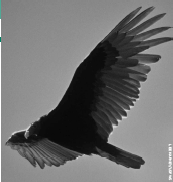
Spring 2008
volume 17 No. 1
Ask the Steward
by Dan Ernst
Q. On a cold, but sunny January day I heard a loud crack in my woods. Someone told me it was a tree frost cracking. Is this damaging?
A.
There is nothing quite like the rifle shot sound of a ‘frost crack’ echoing through the woods on a warming winter day. This cracking most commonly occurs on cold, but sunny winter days. The warm sun heats the bark and wood directly under the bark causing them to expand. Meanwhile the wood deeper in the tree does not expand at the same rate and POW! The tree splits and frost cracking occurs, or reoccurs. Oddly enough the frost and cold does not initiate the initial tree cracking- this usually originates from an old tree wound or poorly healed branch stub. Once a crack occurs it may open and close several times during the year, or even heal over after many years of callus tissue growth. You may have noticed this in your woods. A frost crack appears as a long vertical seem, often on the south or southwest side of the tree, sometimes with a raised strip of callus or scar tissue along the seem. These cracks can allow an entry point for wood decaying fungi, but generally do not require any treatment in a wooded setting.
Q. I saw the first buzzard of the year around Valentine’s Day. Do they really migrate?
A.
With a wing span of nearly 6 feet the buzzard is an impressive sight in the sky, but it’s perhaps better known for its ugly, bare-skinned, red face. The bird we simply call a buzzard is properly known as the Turkey Vulture, or commonly the Turkey Buzzard (scientific name Cathartes aura). Male and female birds look quite similar, with the female somewhat larger in size.In Northern parts of its range it migrates as far as South America, but generally not beyond the United States. They return in time for mating season (March-May), generally laying two eggs which hatch in 30 to 40 days. Hinkley, Ohio celebrates the first Sunday after March 15th as “Buzzard Sunday” as the buzzards return from their winter homes bringing a sure sign of spring to the Midwest. In some locations of Southern Indiana you may see buzzards as early a late January, perhaps even a few in the extreme southern part of the state staying throughout mild winters.
It is one of the few birds of prey using the sense of smell to find its meal. Keen senses detect the gas of rotting carrion at significant distances. Turkey vulture populations are increasing as their range extends further north. Today the population is estimated at more than four million birds.
n